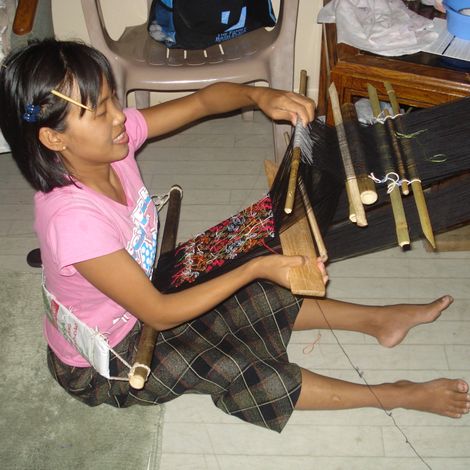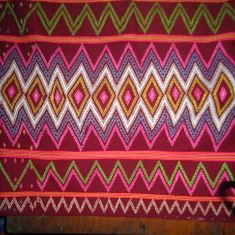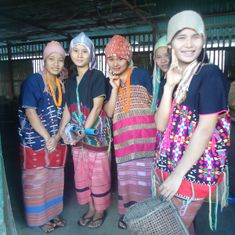Hope through Common Threads




While living in Thailand, I developed a love for the handmade textiles woven by Burmese refugee women. From my perspective as a Western visitor, the textiles were “wearable art,” beautiful with intricate and colorful patterns. To them, the textiles are purely functional. They use them as clothing worn daily to carry vegetables from the market or their gardens and even to carry their babies on their backs while they work.
The women weave these textiles using a back-strap loom, a traditional and ancient technique used by indigenous peoples around the world. They build the looms themselves out of wood and pvc piping and they weave for hours at a time in their homes. Not only does weaving preserve these ancient techniques, it also ties their communities together, bringing women together to talk about social and economic issues. Weaving provides an outlet for self-expression and most importantly it creates supplementary income.
I want to help the refugee women I work with in Florida preserve their traditional craft and support themselves financially. When they arrive in America, they face an uphill battle. Most speak little or no English and have very limited employment prospects. This project will provide refugee women with the materials necessary to build their own looms and start weaving. It will also help them with the marketing and sales of their finished textiles.
By organizing “sewing circles” which include Iraqi, Afghan, Cuban, Colombian, Congolese and Ethiopian refugees, as well as Burmese, the women will improve their English skills because it is the only way they will be able to communicate across nationalities. This program will help the refugee women preserve their cultures while simultaneously improving their integration into American culture by creating a desirable artisanal textile products and selling them at local arts markets. Eventually, we will grow the program to include instruction on Internet sales, including product listing sites like Etsy.